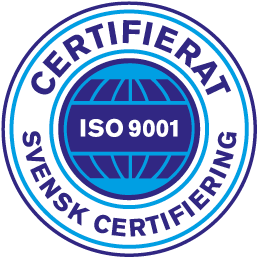Black swans of MES/MOM business cases
The theory of black swan events is a metaphor that describes an event that is extremely rare but has severe consequences. No one knows when they occur, nor what is their probability. An earthquake would be an example of a black swan event.
The more we encounter white swans, the more we refuse to admit that black swans exist.
When considering starting a MES/MOM project to ramp up your manufacturing operations, the first step is to create a solid business case to assess if the investment would be worthwhile or not. The purpose of creating a business case is to quantify the value of the investment, convert everything to the same currency, and translate the investment into net present value. However, no matter how carefully you perform all these calculations, there are several potential black swans that threaten their accuracy. The very nature of black swan events is that they are hard to predict. Therefore, it is not simple to quantify the risk they present.
When implemented right, a manufacturing execution system (MES) or manufacturing operations management solution (MOM) will mitigate the risk of a black swan event occurring. However, quantifying such a benefit in business case calculations is hard. How do you put a price tag to an event whose likelihood is hard to know?
Since quantifying the benefit of mitigating risks of black swan events is hard, business cases will often neglect them completely. This will lead to a business case which lacks some of the benefits that could be gained. Further, the decision of starting or not starting a MES/MOM project is made based on a business case with incomplete information.
Over the years, I have come to witness several types of black swan events in situations where companies have decided not to invest in developing the intelligence of their manufacturing. In this blog post, I will discuss five of such black swans that lurk in the shadows when a No-Go decision is made for a MES/MOM project. As examples, I will point to some well-known cases that have been reported in media.
Instead of talking about a “MES/MOM project”, I should perhaps rather be talking about “making manufacturing more intelligent”, as it is not only an IT system that is implemented in MES/MOM projects, but also a change in processes, people’s skills, and even in organizations. However, I will talk about a MES/MOM project here because that is more tangible.
Let’s have a look at five potential black swans that might be waiting to strike your company if a No-Go decision is made for a MES/MOM project:
Potential Black Swans
Competitors steal your market share
When implemented right, one of the biggest advantages of MES/MOM is the speed of new product introduction. New product development will become faster, as drafts and prototypes can be easily manufactured in the actual production lines. However, if you say no to a MES/MOM project, you risk ceding this advantage to your competitors.
If your competitors’ manufacturing is in better shape for capturing the market changes, you might be in trouble. Especially in consumer goods, the advantage of rolling out new products faster might give your competitor the golden opportunity to steal your market share.
Loss of reputation and sales
If a contaminated or defective product is not spotted in manufacturing and reaches the consumer, the damages can be massive. Naturally, it is extremely important not to let contaminated or defective finished product to be dispatched in the first place, but in case the product has already left the factory, the next most important step is to narrow down the scope of the damages; that is, to successfully recall only those products that are contaminated or defective. The smaller the number of recalled products, the smaller the damage. The recall might cause direct costs related to inventory and waste, or indirect costs related to brand value and reputation.
When MES/MOM has been implemented correctly, this black swan won’t hit you or at least won’t be as severe.
You can read more about some of the most expensive product recalls here:
https://www.bloomberg.com/news/photo-essays/2013-01-17/the-most-expensive-product-recalls
New competitors emerging to the market
As industry 4.0 will gain ground during the coming ten years, the agility of manufacturing sites will increase massively. Changing production line configurations, producing smaller batches, adjusting machine parameters, and increasing the overall adaptability will become the new norm. In step with that development, competition is getting ever fiercer. A competitive edge that a manufacturing site perhaps has today might not be there anymore in a few years. Therefore, you should ensure that the maturity or the intelligence of your manufacturing is high enough to be prepared for new competitors.
Until now, we’ve seen this mostly in technology/software business where new players frequently emerge and beat the old kings. This is partially possible because producing software is fast. However, in the future, as manufacturing sites become more agile, the phenomenon might spread to industries with manufacturing as well, thus fundamentally changing the nature of competition.
Look at Tesla, for instance. The bottleneck for Tesla’s growth has been their inability to ramp up their production fast enough to keep up with customer demand. Imagine the effect on old players like VAG, Toyota, General Motors, and Ford if Tesla had been able to ramp up their production and supply chain faster.
Mass-customizing products for consumers requires an effective sales-development-production-delivery pipeline. Here, a vital part of the profit is made with the effective management of the information in this chain. New products, business models, and competitors are constantly trying to take advantage of this trend.
Collapse of a crucial legacy system
There are lots of extremely sophisticated legacy systems that have been tailored and developed over the years to the needs of manufacturing sites. But what will happen when, one day, the support for these systems suddenly disappears, the technology becomes obsolete, or the system breaks down and cannot be brought up and running again? This is a prime example of a black swan: everything seems to be just fine and going as planned, when suddenly, one day, a black swan event occurs.
For instance, in 2016, Delta Airline’s old reservation management system crashed; its entire fleet was grounded. This failure cost the company a staggering 150 million dollars. (https://www.spiria.com/en/blog/method-and-best-practices/cost-legacy-systems/)
Had this event been considered in the business case of modernizing the system, the result could have been different.
Regulatory compliance
Most manufacturing companies need to follow some standards, rules, regulations, or other requirements set, for instance, by legislation, standardization organizations, authorities, or customers. Although new rules and regulations won’t just appear out of nowhere, new requirements and the challenges of living up to them might still come as a surprise for the manufacturing industry.
For instance, achieving complete process and material traceability might first seem like an easy task, but the fact is that if the processes, organization, people, and IT systems don’t support this, meeting the compliance requirements might be quite a challenge.
A solid business case is often required to serve as the foundation for your MES/MOM project. However, when quantifying costs and profits that often come with a MES/MOM project, it is hard to give a price tag to black swan events – events that are extremely severe but also extremely unlikely to happen. The impact of black swan events might perhaps be estimated, but their probability is very hard to determine.
Here I have given five examples of black swan events that might strike if no action is taken to make manufacturing more intelligent and if a No-Go decision is made for starting a MES/MOM project.
How do you deal with black swans when creating your business case?











